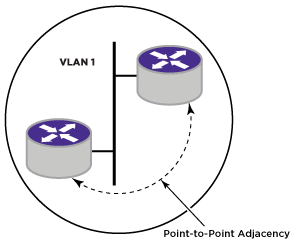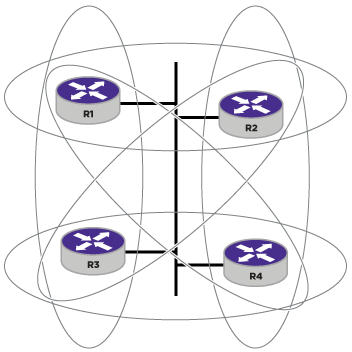Point-to-Point Adjacency
Point-to-point adjacencies can include no more than two routers in the same VLAN. Point-to-Point Adjacency shows a point-to-point adjacency.

Once a point-to-point adjacency is established, each router sends a CSNP (Complete Sequence Number PDU) listing a summary of all its LSPs. When a router receives its neighbor's CSNP, it sends any LSP it has that is either not present in the CSNP or is newer than the version in the CSNP. In a point-to-point adjacency, partial sequence number PDUs (PSNPs) are used to acknowledge each LSP a router receives from its neighbor. If a PSNP is not received within a configurable period of time, unacknowledged LSPs are re-sent.
A disadvantage to point-to-point adjacencies is that they do not scale well. Point-to-Point Adjacencies in a Four-Router Network shows a four-router network with point-to-point adjacencies.

In this network, each of the ellipses represents a point-to-point adjacency. Each of the four routers periodically sends all of its LSPs to the other three routers. Each, in turn, will flood the received LSPs to the other two since they have no way of knowing which routers have already received them, generating N2 LSPs. This network routing traffic reduces the bandwidth available for data traffic. For networks that only have two routers and are not likely to grow, a point-to-point adjacency is appropriate.

